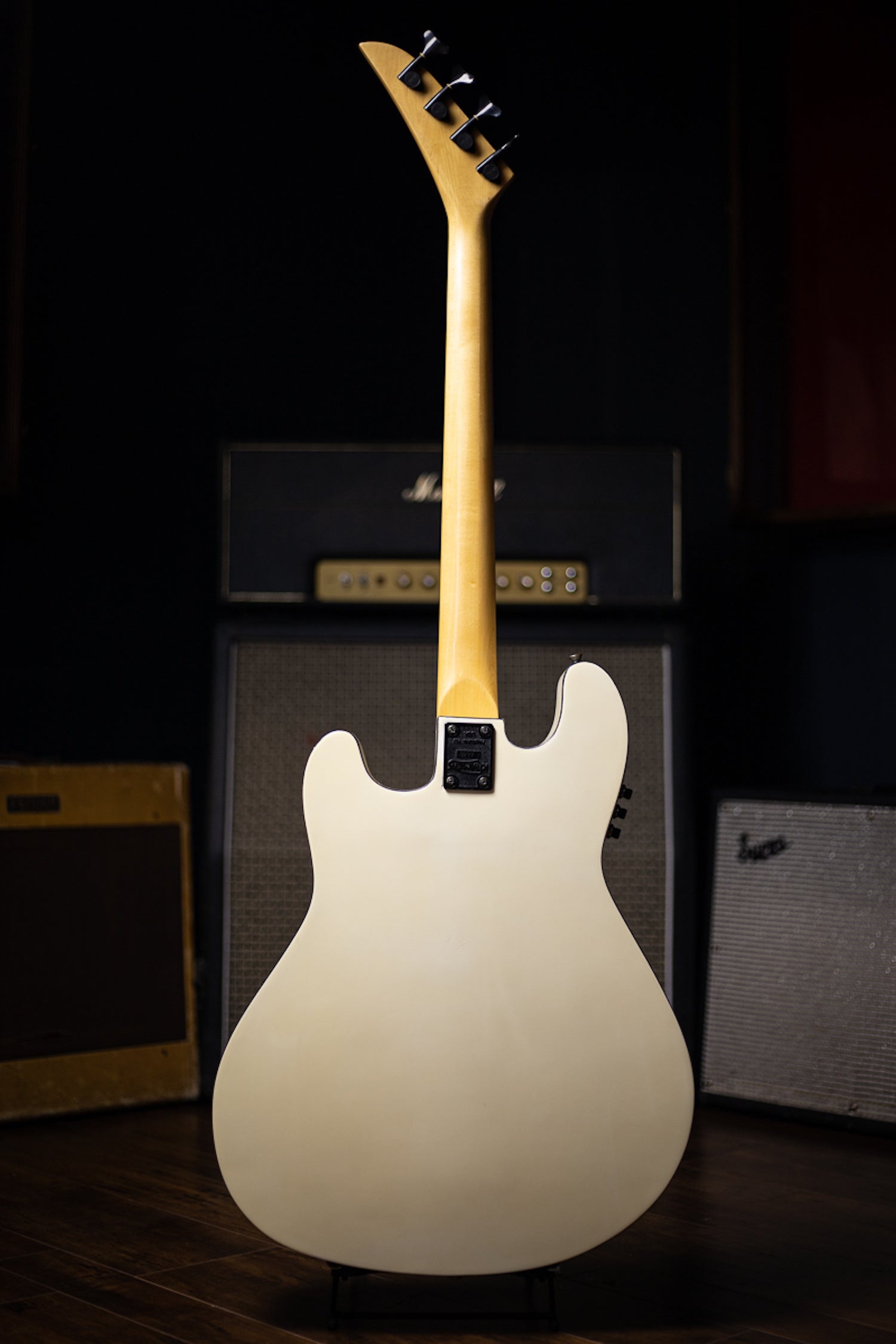

Phil also owns a 1964 Fender Stratocaster that he uses for recording. The original mini-humbuckers aka New York humbuckers were replaced with a PAF and a PRS pickup.

Keaggy states that his main electric guitar is still the 1971 Gibson Les Paul Deluxe.

In 2000 Keaggy began using a Rolls RFX MIDIWizard foot controller to control his Lexicon JamMan. He then sends the chorused signal to a Lexicon Jam Man, which has 32 seconds of loop time, and route its output back into channel two of the Deltafex for reverb, then the signal goes to the P.A. The signal then goes to a Line 6 DL4 Delay Modeler, and into channel one of a Peavey Deltafex set for chorus. After that it goes to his Boss tremolo unit, and to Boss Dimension C, and Octave pedals. In an interview with Guitar Player Magazine, Keaggy states that he runs his guitars signal through a Boss volume pedal and then into a Visual Sound Route 66 compressor/overdrive. I’ve even seen him sing into the guitars sound-hole microphone to achieve background vocals, by looping his voice. Keaggy certainly has his own signature way of playing and he has taken looping to another level to make his songs sound like a band is backing him up. Keaggy’s technique includes volume swells done on his Les Paul by using a finger on the volume knob, harmonics and glissandos and incredible looping. Keaggy has nearly 50 recordings featuring him on electric and acoustic guitar covering not just Christian music, but rock and new age jazz. He has been featured in many mainstream guitar publications and has played alongside guitarists such as Paul McCartney and Eric Clapton. Phil Keaggy has been embraced by the public not just as a Christian recording and touring artist, but because of his incredible guitar skills and style, he has been accepted as one of the World’s great guitarist.

The keyboard player was in charge of the band, which allowed Phil to concentrate on playing guitar and singing. Keaggy and his band played a 90 minute set. Keaggy also brought along an Ovation classical electric guitar, model 1613, and used it on a few songs that night. To my surprise his singing voice, was quite small, though it certainly sounded big threw the house system. He played this through a black faced Fender Twin Reverb amplifier and only had just a few pedals in front of him. He was still playing his 1971 Les Paul Deluxe that had mini-humbucking pickups. I was seated at a table right in front of the stage and got to meet Phil. Then after dinner, the stage was cleared and Phil and his band took the stage. Phil had left Glass Harp in 1972 to pursue a solo career that is still ongoing.ĭuring dinner we listened to a traditional big band playing some standards. I was fortunate enough to have attended this concert. For their grand opening they hired Phil Keaggy as the entertainment. It was a nice idea from an evangelic point, but a bad business move. In 1975 a large church in my home town decided to open a “Christian Nightclub”. I went out a few days later and purchased their album Synergy. This tune ended with a classical-style riff that he used in at least one other song. He then picked up a Ramirez classical guitar and sat down in a chair and sang a couple of beautiful songs.Īs I recall one of the songs he sung was called The Answer. During that concert Phil Keaggy played his Gibson Les Paul for most of the night.Īt some point he put that guitar down and announced that he had just become a Christian and was going to play some songs that he had just written. As a group they were an amazing trio, but the guitarist was the one that really stood out. I saw Glass Harp in concert 1972 at the University of Cincinnati.


 0 kommentar(er)
0 kommentar(er)
